Understanding and Resolving Common Email Delivery Issues
Understanding Email Delivery: The Basics
- What is Email Delivery?
- How Does Email Delivery Work?
- Common Terminology in Email Delivery (SMTP, IMAP, POP3)
- Common Symptoms of Email Delivery Issues
- Bounced Emails
- Delayed Deliveries:
- Complaints of Non-Receipt:
- Spam Folder Deliveries:
- Unusually Low Engagement:
Tools to Diagnose Email Delivery Issues
- Email Tracking Software
- SMTP Logs
- Email Debug Checker
- Delivery Monitoring Services
- Spam Testing Tools
- Fraud Detection Test
- Feedback Loops
- Blacklist Check Services
Analyzing Email Headers and Server Logs
Understanding Bounce Messages
Best Practices to Improve Email Deliverability
- Ensuring Email Authentication: SPF, DKIM, and DMARC
- Maintaining a Clean Email List
- Importance of a Good Sender Reputation
Advanced Solutions and Troubleshooting
- Choosing the Right Server Protocol
Case Studies and Real-World Examples
- Example of Resolving a Spam Filter Issue
- Case Study: Improving Deliverability for a Marketing Campaign
Understanding Email Delivery: The Basics
What is Email Delivery?
At its core, email delivery is the successful transmission of an email message from a sender's email client through to the recipient’s email server and finally to their email client. This process appears straightforward to the user, but involves a complex network of servers and protocols working in harmony. Effective email delivery ensures that messages are not only sent but also accurately received, readable, and free of security threats.
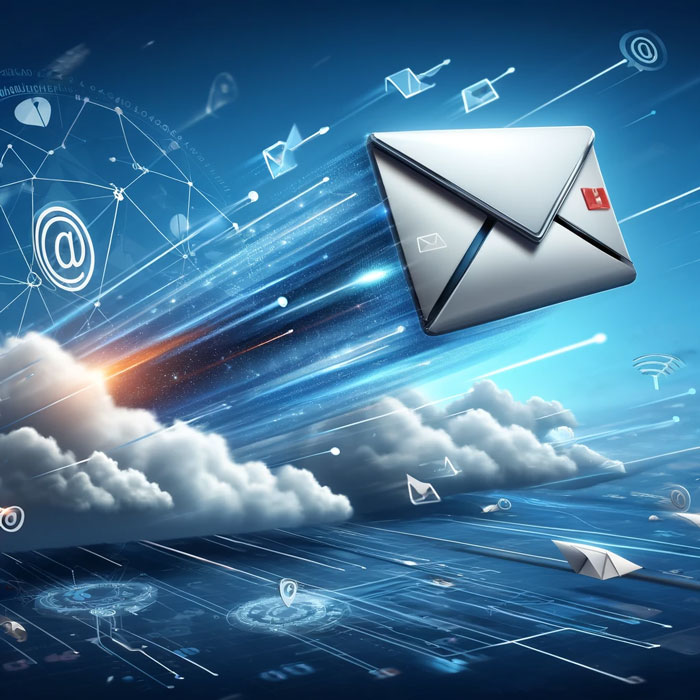
How Does Email Delivery Work?
The process begins when a sender composes a message and hits send. The email is then routed from their email client to their outgoing mail server. From there, the server uses a domain name system (DNS) to find the recipient's mail server and forwards the email to it. Once the recipient’s server receives the email, it is screened for spam and, assuming no issues, is stored until the recipient accesses their inbox and downloads the message. This flow must be seamless to avoid any email delivery issues that could prevent the message from arriving.
Common Terminology in Email Delivery (SMTP, IMAP, POP3)
Understanding email delivery also involves familiarizing oneself with key protocols:
- SMTP (Simple Mail Transfer Protocol): This is the standard protocol used for sending emails across the internet. It handles the transmission of emails between servers and from senders to a recipient's server.
- IMAP (Internet Message Access Protocol): IMAP is used by email clients to retrieve messages from a mail server. It allows a client to access and manipulate a remote mailbox as if it were local. One of its primary benefits is that it lets users read emails as they appear on the server without downloading them first.
- POP3 (Post Office Protocol version 3): Another protocol used for retrieving emails, POP3, unlike IMAP, downloads the email from the server to the client’s computer, which means the messages are typically deleted from the server after download.
Identifying Email Delivery Issues
Common Symptoms of Email Delivery Issues
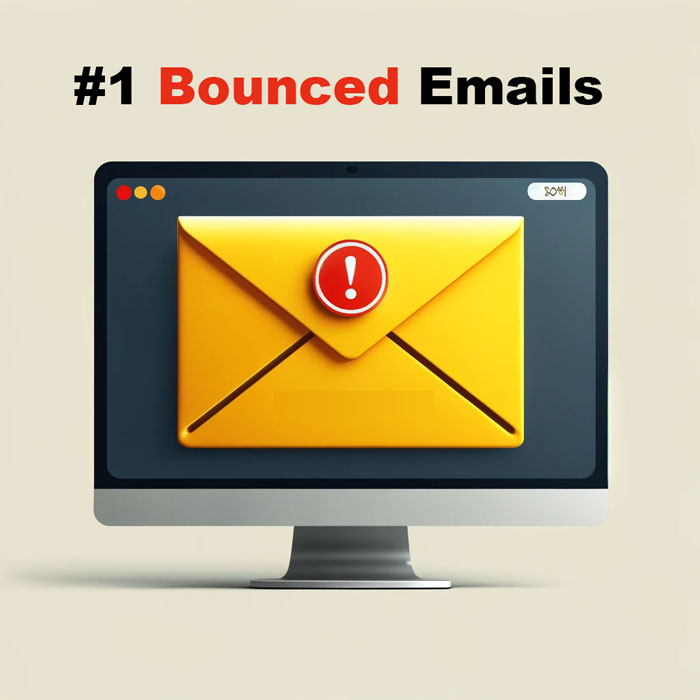
1. Bounced Emails:
This typically happens for a few reasons: the recipient’s email address may be incorrect or no longer in use, their mailbox could be full, or the email server could be temporarily unavailable. Bounced emails are classified into two categories: hard bounces, which are permanent and result from a non-existent address, and soft bounces, which are temporary issues, like a full mailbox or a server problem and both are important email delivery issues.
Understanding and managing bounced emails is crucial for maintaining effective email communication and hygiene and reduce the email delivery issues. Regular monitoring of email delivery reports can help identify and correct issues that lead to bounces. It’s also important to clean email lists periodically by removing addresses that consistently bounce, thus improving overall deliverability and protecting sender reputation. Implementing a double opt-in process for email subscriptions can further reduce bounce rates by verifying that the email addresses provided by subscribers are correct and active.
2. Delayed Deliveries:
This email delivery issue could be for several reasons, such as network congestion, server overloads, or issues with the recipient's email server. High volumes of traffic can cause emails to queue up, resulting in delays, especially if the sending or receiving server implements throttling to manage the load. Additionally, spam filters may temporarily hold emails for extensive scrutiny if they contain suspicious content or come from a previously flagged source. Such delays are often unpredictable and can vary in duration depending on the underlying issue and the responsiveness of the email infrastructure involved.
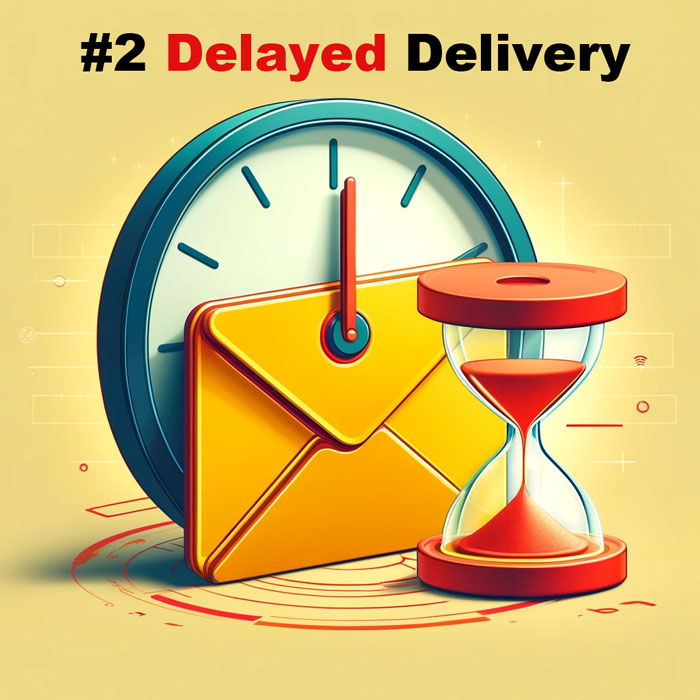
3. Complaints of Non-Receipt:
One other email delivery issues is when recipients report not receiving emails despite them being sent, which suggests issues with email filtering or misrouting.
In these kind of email delivery issues, several factors could be at play. One common reason is emails being caught by spam filters due to suspicious content or if the sender's IP address is blacklisted. Additionally, emails might not be delivered if the recipient's mailbox is full or there are server issues on the recipient’s end.To minimize these issues, it's essential for senders to ensure their email settings are correctly configured with SPF, DKIM, and DMARC for authentication. Recipients should regularly check their spam folders and set appropriate filtering rules. Both parties need to maintain clear communication about email issues and check for any typos in the email addresses used. Monitoring the reputation of sending IPs and domains can also help avoid being blacklisted, ensuring emails reach their intended destinations.
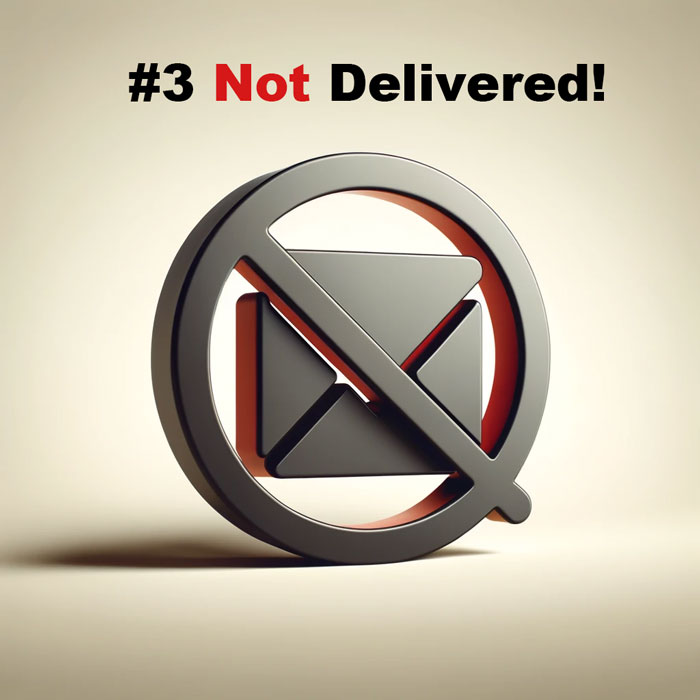
4. Spam Folder Deliveries:
Spam folder deliveries, where legitimate emails are incorrectly flagged and routed to a recipient's spam or junk folder, present a significant challenge in digital communication. These email delivery issues occurs due to the protective algorithms employed by email service providers, designed to shield users from unwanted, harmful, or fraudulent content. These algorithms assess various elements of incoming emails, including the sender’s reputation, the presence of specific trigger words commonly used in spam (like "buy now," "free," or "offer"), unusual formatting, and suspicious links or attachments.
The problem with these filters is that they are not foolproof and can sometimes be overly aggressive, resulting in false positives. For instance, if a legitimate business sends a promotional email that closely resembles typical spam criteria in its enthusiasm to engage customers, it may inadvertently trigger spam filters and and occurs email delivery issues. Furthermore, marketing campaigns or bulk emails sent from new or less reputable domains might be flagged simply due to the lack of established trust or prior sender history.
To reduce the incidence of emails landing in spam folders, senders can take several proactive measures. These include regularly updating their email lists to remove inactive or unresponsive addresses, using double opt-in processes to ensure recipients genuinely wish to receive the emails, and carefully crafting email content to avoid known spam triggers. Additionally, maintaining a consistent sending pattern can help build a positive sender reputation over time and avoid email delivey issues. It's also beneficial for senders to encourage recipients to whitelist their email address, which significantly decreases the likelihood of emails being marked as spam.

5. Unusually Low Engagement:
Unusually low engagement in email campaigns, characterized by lower-than-expected open or click rates, can be a red flag for email delivery issues. When analytics indicate such dips, it may suggest that emails are not being delivered properly, potentially landing in spam or junk folders due to aggressive filtering, or that they're not reaching the intended audience at all.
Several factors could be contributing to these email delivery issues. Technical challenges, such as a poor sender reputation or lack of proper email authentication (SPF, DKIM, DMARC), can hinder email deliverability. Additionally, if the content of the emails contains too many links, large attachments, or spam-trigger keywords, it could affect their ability to reach recipient inboxes. On the audience side, issues like outdated or poorly segmented email lists can result in emails being sent to disinterested or inactive recipients, further driving down engagement metrics.
Addressing these email delivery issues requires a combination of good practices, including regular monitoring of email analytics to catch and resolve delivery problems swiftly, meticulous list management to ensure emails reach active and interested users, and continuous optimization of email content based on recipient feedback and A/B testing results. Through these strategies, businesses can improve their email engagement rates and ensure their communications are both seen and acted upon by their target audience.
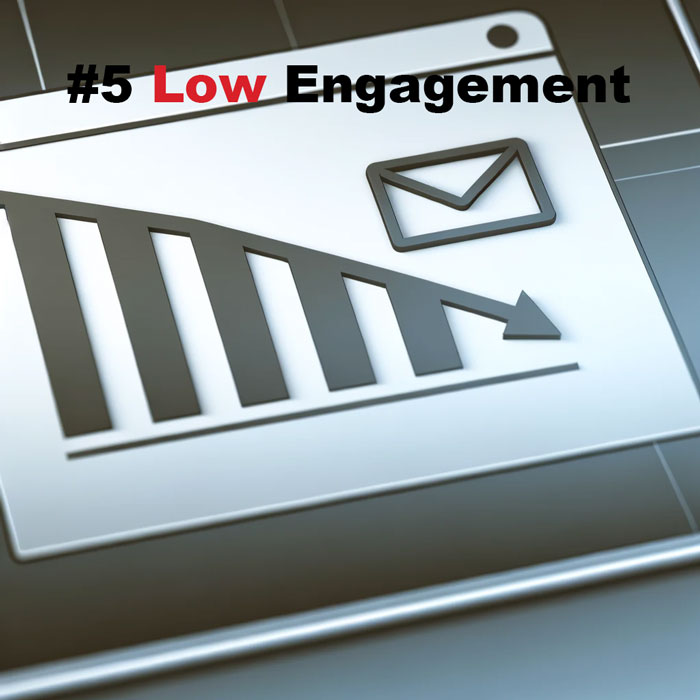
Tools to Diagnose Email Delivery Issues
1. Email Tracking Software
2. SMTP Logs
3. Delivery Monitoring Services
4. Spam Testing Tools:
Also read this article: Why do I need to use email spam checker?
Our service offers a robust solution that ensures your registration details meet the quality standards expected by most online platforms, preventing common issues related to account verification. With our assistance, you can sign up confidently, knowing that the integrity of your IP address, email, and phone number will not hinder your registration process. Embrace a smoother, hassle-free registration experience with our innovative tool designed to pave the way for your successful online engagements. Click here to start your fraud detection test.
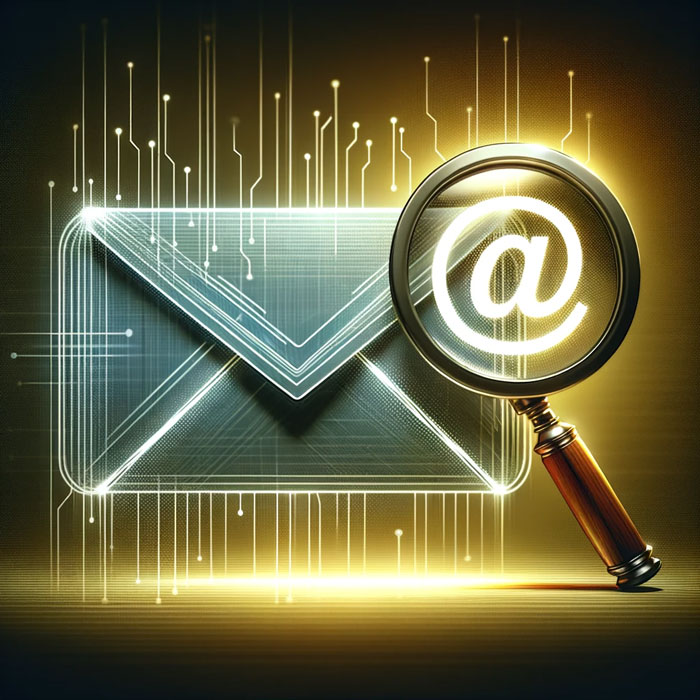
5. Feedback Loops
6.Blacklist Check Services:
Analyzing Email Headers and Server Logs
- Locate the header information, which is usually accessible from the 'details' or 'properties' section of an email.
- Use tools like MXToolbox or Google's Messageheader Analyzer to decode and analyze the data for anomalies or red flags that might indicate why an issue occurred.
Understanding Bounce Messages
Bounce messages, or Non-Delivery Reports (NDRs), are notifications that an email has not been delivered. Reading and understanding the reasons given in these messages are key to resolving delivery issues. Common reasons include:
- User Unknown: The recipient email address does not exist.
- Mailbox Full: The recipient’s email inbox is full.
- Blocked by Server: Often due to the email being flagged as spam or due to IP reputation issues.
- Attachment Size Exceeded: The email contains attachments that are too large for the recipient's server settings.
Each bounce message typically includes a status code and a description that can help pinpoint the specific issue. Familiarizing oneself with these codes is essential for quickly addressing and resolving email delivery issues.
Best Practices to Improve Email Deliverability
Ensuring the reliable delivery of emails is crucial for maintaining effective communication channels, whether for personal interactions or business correspondence. By adhering to best practices in email management and setup, you can significantly enhance the likelihood that your emails reach their intended recipients without disruption. Here’s how you can optimize your email deliverability:

Ensuring Email Authentication: SPF, DKIM, and DMARC
One of the most effective strategies to improve email deliverability is to implement strong email authentication measures. These include Sender Policy Framework (SPF), DomainKeys Identified Mail (DKIM), and Domain-based Message Authentication, Reporting, and Conformance (DMARC).
DKIM adds a digital signature to each outgoing email, which helps the receiving server verify that the email hasn’t been tampered with during transit and that it indeed originates from the specified domain.
DMARC uses SPF and DKIM to provide a framework for email recipients to better handle fraudulent emails. It allows senders to indicate that their emails are protected by SPF and DKIM, and tells the receiving mail servers what to do if neither of those authentication methods passes – such as junking or rejecting the message.
Maintaining a Clean Email List
Another crucial aspect of maintaining high deliverability is regularly cleaning your email list. This involves removing unengaged subscribers, correcting addresses with typos, and addressing other list hygiene factors that can affect email performance. A clean email list ensures that your engagement rates remain high, which is a positive signal to email service providers that your messages are welcome and valued by recipients. Moreover, this reduces bounce rates and protects your sender reputation.
Importance of a Good Sender Reputation
Your sender reputation is a score that Internet Service Providers (ISPs) assign to an organization that sends email. It's similar to a credit score and influences whether your emails will reach the inbox or the spam folder. Maintaining a good sender reputation involves several practices:
- Send emails consistently without sudden spikes in volume, which might appear suspicious.
- Keep complaint rates low by providing valuable content and avoiding practices that might annoy recipients.
- Keep complaint rates low by providing valuable content and avoiding practices that might annoy recipients.
- Engage users with personalized content to encourage positive interactions such as opens and clicks.
The benefits of a good sender reputation include improved deliverability across all your campaigns, leading to better engagement rates and overall communication efficacy.
In summary, enhancing email deliverability revolves around robust authentication protocols, diligent list management, and the nurturing of a positive sender reputation. Together, these practices ensure that your emails not only reach their destination but also contribute positively to ongoing relationships and business objectives.

Advanced Solutions and Troubleshooting
Proper configuration of email server settings is fundamental to ensuring efficient and reliable email delivery. Misconfigurations can lead to emails being blocked, delayed, or sent to spam folders, which can disrupt communication and damage a sender’s reputation. Here’s a comprehensive guide on how to correctly configure your email server settings to enhance email deliverability:
Choosing the Right Server Protocol
The choice of protocol—whether SMTP, IMAP, or POP3—depends on your specific needs:
- SMTP (Simple Mail Transfer Protocol) is essential for sending outgoing emails. It needs to be correctly set up to ensure that emails are transmitted securely and efficiently to the recipient's mail server.
- IMAP (Internet Message Access Protocol) is recommended for receiving emails if you need to access your email from multiple devices because it allows you to view your emails directly from the server without downloading them.
- POP3 (Post Office Protocol version 3) is suitable for downloading emails to one device, typically a personal computer, where managing emails directly on the server isn’t necessary.
Case Studies and Real-World Examples
Examining real-world examples and case studies can offer valuable insights into resolving common email delivery issues and improving overall email deliverability. These examples illustrate the practical application of email management techniques and strategies, providing a clearer understanding of how to tackle similar problems in various scenarios.
Example of Resolving a Spam Filter Issue
Background: A small e-commerce business noticed a sudden drop in their email engagement rates. A significant number of their promotional emails were being marked as spam by several major email providers, severely impacting their marketing efforts.
Challenge: The primary challenge was to identify why the emails were being flagged as spam and to rectify the issue to restore the effectiveness of their email marketing campaigns.
Solution: The company conducted an audit of their email practices and discovered several issues:
- Their email list contained several outdated and incorrect email addresses, contributing to a high bounce rate.
- The content of the emails included overly promotional language and multiple exclamation marks, which are common triggers for spam filters.
- The SPF and DKIM records were not correctly set up, leading to authentication failures.
To address these issues, the company took the following steps:
- Cleaned their email list by removing inactive and incorrect email addresses.
- Revised their email content to make it more informative and less promotional, avoiding language typically flagged by spam filters.
- Corrected their SPF and DKIM configurations to ensure emails were properly authenticated.
Outcome: After implementing these changes, the company saw a significant improvement in their email deliverability rates. Their emails began reaching their customers' inboxes more consistently, leading to an increase in engagement and sales.
Case Study: Improving Deliverability for a Marketing Campaign
Background: A digital marketing agency was tasked with managing a large-scale email campaign for a client launching a new product. Initial tests showed lower than expected deliverability rates, which could jeopardize the campaign's success.
Challenge: The agency needed to enhance the email deliverability to ensure maximum reach and engagement for the campaign's target audience.
Solution: The agency implemented several strategic changes to improve deliverability:
- They segmented the email list based on user engagement, targeting the most active users first to boost initial engagement rates, which positively affects sender reputation.
- They worked with the client to obtain a dedicated IP address for sending emails, which helped isolate and protect their sender reputation.
- They introduced a progressive ramp-up strategy, gradually increasing the volume of emails sent to warm up their new IP address.
Additionally, the agency optimized the email content for better performance:
- Personalized email content based on user data to increase relevance and engagement.
- Ensured all emails were responsive and tested across different devices and email clients.
- Scheduled emails based on optimal engagement times identified through analytics.
Outcome: These targeted strategies led to a marked improvement in email deliverability. The campaign achieved a higher open rate and more significant user engagement, ultimately contributing to a successful product launch.

